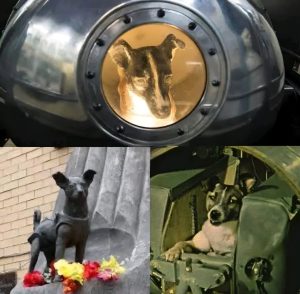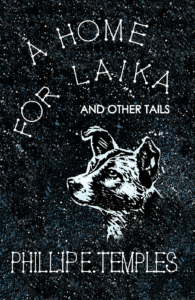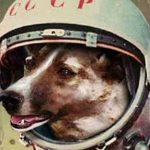 via H/T Facebook post:
via H/T Facebook post:Laika 67th Anniversary
 via H/T Facebook post:
via H/T Facebook post: via H/T Facebook post:
via H/T Facebook post:From Writer’s Almanac, November 3, 2024:
A little dog named Laika was launched into space aboard Sputnik 2 on this date in 1957. The mission for Sputnik 2 was to determine if a living animal could survive being launched into orbit. Laika was a stray that had been picked up from the Moscow streets, a 13-pound mutt with perky ears, a curly tail, and uncertain ancestry. She probably had a little spitz or terrier in her family tree, maybe a Siberian husky or even a beagle here and there. She was three years old, a good-natured dog that came to have several nicknames: Lemon, Little Curly, and Little Bug. Her name, Laika, means “barker” and was a generic term applied to all spitz-type dogs. The American press called her “Muttnik.” The Soviet space program deliberately chose strays for their missions because it was felt that they had proven themselves to be hardy, having already survived deprivation, extremes in temperature, and stress.
Laika was the first animal to orbit the Earth. She was harnessed inside a snug, padded cabin with some ability to move, but not much. The capsule was climate-controlled, and she had access to food and water, and there were electrodes monitoring her vital signs, but everyone knew the capsule was not designed to return to Earth in one piece. Knowing that Laika had little time to live, one of the scientists took her home to play with his children a few days before the launch.
For many years, reports of her death were inconsistent; one report said that she lived for six days, until her oxygen ran out. The Soviet government insisted she had been euthanized via a pre-planned poisoned food portion prior to that, to make her death more humane. In 1999, it was revealed that vital signs ceased to be transmitted about five to seven hours after the launch, possibly because the booster rocket failed to separate from the capsule, causing the thermal control system to malfunction and the cabin to become unbearably hot.
In 1998, after the fall of the Soviet Union, one of the scientists spoke of his regret for Laika. He said: “Work with animals is a source of suffering to all of us. We treat them like babies who cannot speak. The more time passes, the more I’m sorry about it. We shouldn’t have done it … We did not learn enough from this mission to justify the death of the dog.”
Looks like I’m not the only person turning out science fiction based on Laika, the 1950s era Soviet space dog. I came across a short sci-fi horror movie this evening entitled “Laika:”
“Fleeing from a catastrophic accident aboard the International Space Station, a lone Cosmonaut faces a haunting spectre from his country’s past. But is it all just in his mind?”
 Former Brookline Poet Laureate and fellow Bagel Bards member Zvi Sesling reviews my short story anthology, A Home for Laika and Other Tails on the Boston Area Small Press and Poetry Scene at: http://dougholder.blogspot.com/2021/11/a-home-for-laika-and-other-tails-by.html.
Former Brookline Poet Laureate and fellow Bagel Bards member Zvi Sesling reviews my short story anthology, A Home for Laika and Other Tails on the Boston Area Small Press and Poetry Scene at: http://dougholder.blogspot.com/2021/11/a-home-for-laika-and-other-tails-by.html.
I’m holding the book proof for my new short story anthology, “A Home For Laika and Other Tails” (sic) from Big Table Publishing, coming soon to Amazon and other online stores.
 Robin Stratton from Big Table Publishing solicited this fabulous blurb for my upcoming chapbook, A Home for Laika and Other Tails“:
Robin Stratton from Big Table Publishing solicited this fabulous blurb for my upcoming chapbook, A Home for Laika and Other Tails“:
“The thirteen charming and funny stories in Phillip Temples’ collection show us that we humans have much in common with our best friend, the dog. We find stories of canine treachery, jealousy and prejudice as well as cunning and bravery. This timeless collection follows the history of man/dog relations from the days of cave-dwellers to space travel and teaches us important lessons about our pets and ourselves. I highly recommend this book for anyone from 6 to 100 years old (and for dogs of all ages).” –John Cuetara, Mixed Messages & Away with Words
 Coming in the fall of 2021, from Big Table Publishing: A Home for Laika and Other Tails is a chapbook collection of thirteen stories featuring mankind’s faithful, but often-times annoying four-legged canine companions.
Coming in the fall of 2021, from Big Table Publishing: A Home for Laika and Other Tails is a chapbook collection of thirteen stories featuring mankind’s faithful, but often-times annoying four-legged canine companions.
Some of these stories have appeared in: Boston Literary Magazine, Ariel Chart: International Literary Journal; and Potluck.